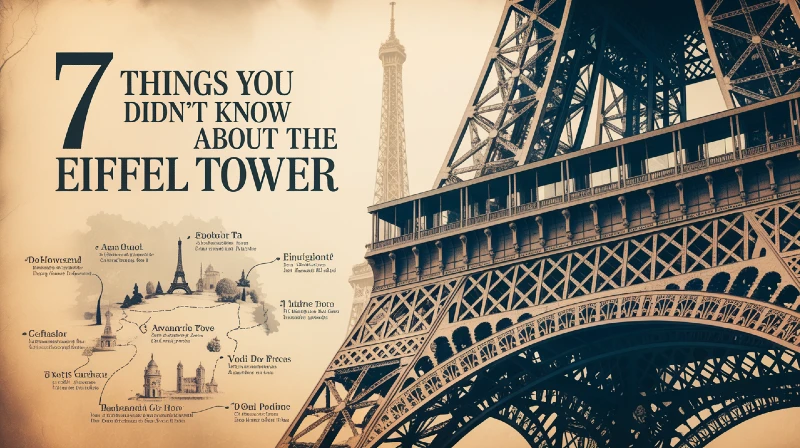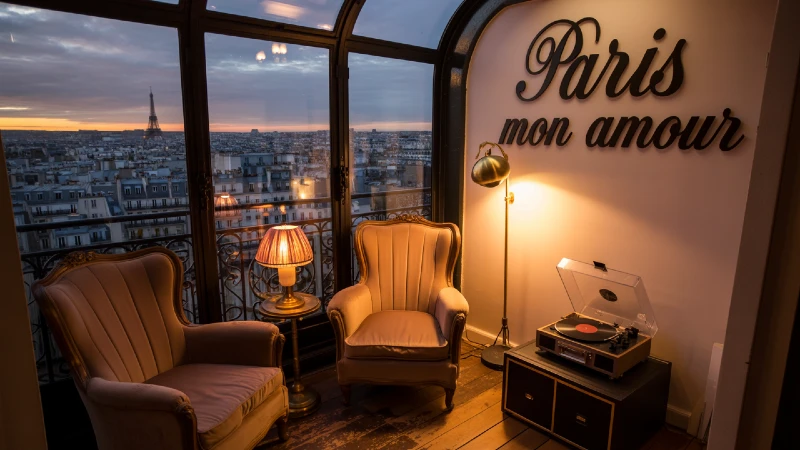7 Things You Didn’t Know About the Eiffel Tower
The Eiffel Tower is more than just the crown jewel of the Parisian skyline—it’s a global icon that draws millions of visitors each year. With its elegant iron latticework and panoramic views of the City of Light, it’s easy to admire the tower at face value. But behind its timeless silhouette lies a story filled with controversy, ingenuity, and reinvention.
Did you know it was originally rejected by another city? Or that it once served as a massive billboard? This article uncovers seven lesser-known facts about the Eiffel Tower that will give you a new appreciation for this engineering marvel. From secret apartments to wartime espionage, prepare to see the Iron Lady in an entirely new light.

1. The Eiffel Tower Was Originally Rejected by Barcelona
Most people associate the Eiffel Tower exclusively with Paris, but few know that it was initially meant for another city entirely — Barcelona, Spain. When French engineer Gustave Eiffel proposed his ambitious iron tower design, he first presented it to the Spanish city of Barcelona for their 1888 Universal Exposition. However, the city’s officials dismissed the idea, calling it “too radical and expensive.”
Fortunately for France, Gustave Eiffel didn’t give up. He presented the design to the organizers of the 1889 World’s Fair in Paris, celebrating the 100th anniversary of the French Revolution. The design was accepted, and what was once seen as an outlandish concept became an enduring symbol of French artistry and innovation.
2. The Tower Was Almost Torn Down in 1909
Imagine Paris without its most famous landmark — a near reality in 1909, just 20 years after the tower was built. Originally, the Eiffel Tower was meant to stand for only two decades as a temporary exhibit for the World’s Fair.
Plans were set to dismantle the iron structure, but it was saved at the last moment due to an unexpected benefit — its utility as a radio transmission tower. During the early 20th century, wireless telegraphy was becoming a crucial technology, and the Eiffel Tower’s height made it an ideal radio transmitter. This role not only saved it from destruction but also turned it into a symbol of France’s technical prowess.
3. Gustave Eiffel Had a Secret Apartment at the Top

High above the bustling streets of Paris, Gustave Eiffel reserved a special space for himself — a private apartment nestled at the top of the tower. This cozy, elegantly furnished space wasn’t just for show; it served as a place for Eiffel to conduct experiments and entertain prestigious guests.
Famous visitors to the secret apartment included Thomas Edison, who gifted Eiffel a phonograph. For decades, this hidden haven remained a mystery, and even today, it is one of the lesser-known but most fascinating aspects of the tower’s history.
4. The Tower Changes Height with the Seasons
If you thought the Eiffel Tower was always the same height, think again. This iconic structure is subject to thermal expansion, meaning it grows or shrinks depending on the temperature. On a hot summer day, the iron can expand enough to make the tower 15 centimeters (about 6 inches) taller.
This natural phenomenon is a reminder that the Eiffel Tower is not just a static monument but a living, breathing structure, responsive to its environment.
5. It Has Been Repainted Multiple Times
The Eiffel Tower’s distinctive appearance has evolved over the years, not just in terms of structure but also in color. Since its completion, the tower has been repainted approximately 19 times, changing from shades of red to yellow and even to the current “Eiffel Tower Brown.”
Every seven years, around 60 tons of paint are used to refresh the tower’s appearance, protecting it from rust and maintaining its iconic look. The meticulous process is part of the ongoing effort to preserve the Iron Lady for future generations.
6. The Tower Played a Critical Role in World War I Communications
During World War I, the Eiffel Tower served a crucial military purpose. Its height made it an ideal location for radio transmitters, which were used to intercept enemy messages and coordinate Allied communications.
In one notable incident, French operators used the tower’s radio capabilities to jam German communications, hindering the enemy’s ability to plan attacks. This strategic use of the tower helped solidify its place as not just a Parisian landmark but a national asset.
7. It Once Served as a Giant Billboard

From 1925 to 1934, the Eiffel Tower was transformed into the world’s tallest advertising space. French car manufacturer Citroën used the tower as a massive illuminated billboard, with bright lights spelling out the company’s name.
The advertisement was visible from miles away and remains one of the most iconic uses of the tower in the 20th century. Today, the Eiffel Tower’s elegant silhouette is left free of advertisements, but its history as a giant billboard is a testament to its adaptability.
Key Takeaways: The Eiffel Tower’s Hidden Stories
| Fact | What You Didn’t Know |
|---|---|
| Rejected by Barcelona | Originally pitched for Barcelona’s 1888 expo—but dismissed as too radical and expensive. |
| Almost Demolished | Meant to be temporary; narrowly avoided demolition in 1909 thanks to its use as a radio tower. |
| Secret Apartment | Gustave Eiffel had a private, fully furnished apartment at the summit for guests and experiments. |
| Seasonal Height Changes | The tower expands up to 15 cm (6 in) in summer due to thermal expansion of the iron. |
| Multiple Repaints | Repainted every seven years; has worn several colors, including red, yellow, and brown. |
| WWI Communications | Played a crucial role in intercepting and jamming enemy transmissions during World War I. |
| Giant Billboard | Served as the world’s tallest ad space with a glowing Citroën sign from 1925 to 1934. |
Conclusion
The Eiffel Tower is more than a global icon—it’s a living testament to innovation, resilience, and reinvention. From being rejected by Barcelona to playing a pivotal role in wartime communications, and even serving as a towering billboard, its journey is as fascinating as its silhouette is striking.
These seven lesser-known stories remind us that even the most familiar landmarks hold hidden chapters—stories of purpose, persistence, and unexpected transformation.
✨ Have you visited the Eiffel Tower, or is it still on your travel bucket list?
Which of these facts surprised or inspired you the most?
We’d love to hear your thoughts in the comments below! 🌍✈️

Eduard Kingly is a travel and lifestyle content creator with a focus on personal development and education. He combines firsthand travel experiences with research-driven insights to guide readers in discovering new places, building better habits, and pursuing meaningful learning.




